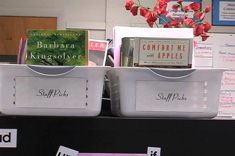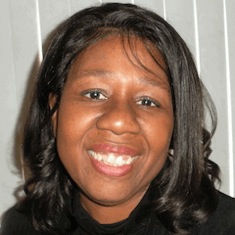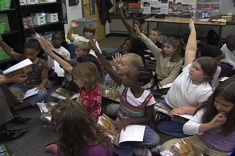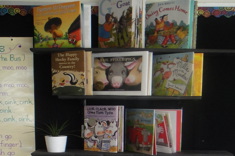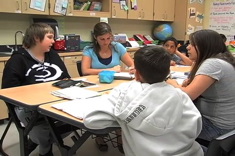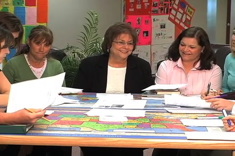My first encounter with a virtual book club was about three years ago. My regular, run-of-the-mill, face-to-face book club was on a field trip. We were taking a tour of the sites mentioned in the book The Devil in the White City (Larson, 2004), given by the Chicago Architectural Society. We thought that we were so innovative. Then we noticed another group of women on the tour. They were all carrying copies of the book and flipping through the pages whenever the bus pulled up to a new site. We went over and introduced ourselves. They told us that they were all from out of town. In fact, each of them lived in a different state. They were members of a virtual book club. Their club has monthly online meetings. Then, once a year, their club has a face-to-face meeting. The meeting takes place in one of the locations from a favorite book that was read and discussed during the year. They try to visit some of the sites from the book while they are in the city. This time, the Chicago Architectural Society’s organized tour had made it easy for them. My book club was absolutely green with envy, and we started daydreaming about traveling to exotic places that were also settings of our favorite books, including Paris for Sarah’s Key
(Rosnay, 2008), Botswana for The No.1 Ladies’ Detective Agency
(Smith, 1998), Chile for Daughter of Fortune
(Allende, 2006), and more.
When Rexie Lanier (a literacy coach) announced that she had hosted a virtual book club, she immediately got my attention. Rexie had been looking for a way to involve the middle school teachers in the Bloomington-Normal, Illinois school district in a book club, but a number of logistical issues arose during the planning stages. For example, which middle school should be the host site for the book club? Or should the book club meetings rotate across the middle schools? Should the meetings be held before school or after school? A virtual club was not part of her original plan, but it turned out to be a great way to resolve all of these potential issues. Rexie made use of her district blog system which works like a wiki so participants could communally add and respond to text. She convinced the middle school principals to purchase the books for interested teachers. Then she sent invitations – via email, of course. Forty-five teachers from four different schools accepted the invitation. Three principals also agreed to participate.
Book Club Structure
Book selection was crucial to the success of the venture. Rexie took the advice offered in “Great Little Books for Professional Book Clubs” and picked a nonthreatening book — Igniting a Passion for Reading (Layne, 2009). Rexie describes the book as “an easy read that reached many.” She chunked the book into four weekly segments and sent the participating teachers a reading calendar. Rexie asked the teachers to post at least two comments each week by either starting their own thread or responding to others. The teachers also committed to creating something inspired by their reading to use in their own schools.
One small aspect of the book club was non-virtual. Each of the four schools had just one face-to-face meeting during the entire four-week period of the book club. The face-to-face meeting in each school was attended only by the participants from that school, so no traveling from was required. Part of the advance commitment of each participant was to attend the face-to-face meeting that would be held in his or her own building.
The virtual book club was a huge success! Teachers came up with interesting projects to try in their buildings, such as developing a common reading log to be passed on from grade to grade. Some teachers planned to set personal goals for reading and to share those goals with their students. Teachers from all four of the middle schools wanted to create a reading lounge for students in their respective school buildings.
Pros and Cons
The virtual book club was “not all flowers and sausages.” It had its challenges. There were occasional problems with the network. Some teachers were uncomfortable with the technology and experienced some frustrations with the mechanics of participating in online discussions. However, Rexie believes that engaging techno-phobic teachers in an optional, non-threatening activity helped to increase their level of comfort with the technology. Perhaps they’ll be willing to try to include more technology in their future instructional programs. A clear advantage was that everyone could participate at a personally convenient time. The early birds could post their comments while sipping their morning cups of coffee. The night owls could post their comments after turning off “The Colbert Report.” Nobody had to pay a sitter for an extra hour, wake up children an hour earlier, or cancel a meeting of an after-school club that they sponsor.
Next Steps
Rexie sent all the participants a survey to improve future book clubs. She asked:
- What did or didn’t you like about having a book club online?
- What did or didn’t you like about the structure of the “requirements” for the virtual book club?
- Do you have any other comments or suggestions?
- Do you have any possible titles or topics for the next book club?
Would there be a next book club? Absolutely! As a matter of a fact, Rexie has already selected the book for the fall virtual book club. They will read Do I Really Have to Teach Reading? Rexie is using the information from the surveys to better meet the needs of the participants.
The elementary schools and the high schools were feeling left out, so now Rexie is exploring options for book clubs at those levels. Maybe the high school teachers can participate in the virtual discussions with the middle school teachers. Perhaps the elementary school teachers can participate in traditional (non-virtual) grade level book clubs across buildings. This would entail face-to-face meetings among participants from different schools, which might be workable on late start days. Other leaders in the district are considering using virtual book clubs for continuing professional development contact across schools.
It’s not a trip to Paris, but it looks like virtual book clubs have helped one district increase the level of professional reading among its teachers and principals.

